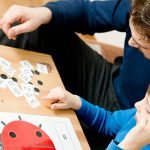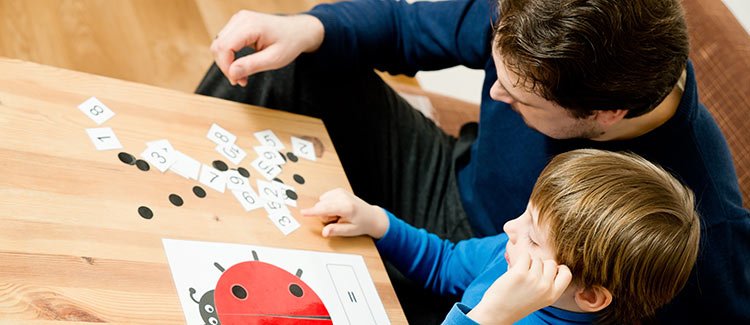At this age, math should be fun — and useful. Play these games and take these opportunities to show your 6-year-old how math fits into everyday life.
-
Classmate math
Starting school again can give your child the jitters. Put your first grader at ease by turning their new class into a solvable problem. Ask, “How many girls are in the class? How many boys? How many total? Were any kids absent today?” Subtract the number absent from the total. Using objects to represent each classmate helps your child with mathematical thinking.
-
I’m thinking of a number…
Kids this age don’t just need to count and compute, they need a feel for numbers. This simple game will help: Think of a number from 1 to 120 (start with a smaller range the first time you play) and have your child guess what it is. Give her hints, like, “higher” and “lower” to help her guess your number. (This game will also prepare your child for the Price Is Right.)
-
Graph those treats!
This Halloween, turn your first grader’s candy treasure into a graphing lesson. Ask your child to sort their sweets into piles (Snickers, Butterfingers, etc.) and count them up. Then draw a bar graph showing the top five treats collected. Ask, “Which candy shows up most often? Least often? Do you have the same amount of any of the treats?” Try this candy-themed worksheet to sweeten the pot.
-
A clock with a face and hands!
This winter, make your first grader your official timekeeper. Start by asking your child the time regularly, focusing on full hours and half hours. Have your child write the time digitally and draw it on an analog clock. Then ask them to draw and write what time it’ll be in half an hour. These time-themed worksheets will help, too!
-
10, 20, 30…
Do you have a jar full of pennies? Use these coins to help your first grader understand counting to 100 by ones and tens. Have your child count out 100 pennies (or whatever you have). Then have your child divide the pennies into groups of 10. Have your child count the pennies by 10s for you. Praise them (and give them some hand sanitizer). Then try this adding coins worksheet to cinch your child’s financial smarts.
-
Laundry and data
Sorting laundry at this age is not only fun but it boosts math learning. Use it to help your child organize, categorize, and count. Match socks, count pairs, and determine how many individual socks and pairs of socks there are. Divide clothes into color categories or separate by where they go. Ask questions to make your child interpret data, such as, “Who needs to go T-shirt shopping?” Several skills can be practiced as you get voluntary help with what will someday become a chore.
-
Help in the kitchen
The first step into fractions for your first grader is now. They can better understand halves and quarters — and that each part is equal! — by “helping” you in the kitchen. Have them tell you where to cut the pizza to make halves, then quarters. Have them share half of a slice of cheese with you or a quarter of an orange. See if they understand that splitting something into two pieces is not necessarily the same as splitting something in half.
-
Math tales: using stories to practice arithmetic
Kids love math stories that include them and their friends! Present a scenario that includes two or three quantities, like Laura had 5 pencils, the neighbor Wallie had 3, and cousin Megan had 7. Ask things like, “If you three put all of your pencils together, how many would you have? How many more pencils does Laura have than Wallie?” Then ask your child to make up addition and subtraction stories that involve themselves and their friends.
-
The value behind the digits
By now your first grader is learning that our number system is based on groups of 10. The number 14 is 10 + 4, for example. Deepen your child’s understanding of this concept by having them collect objects (twigs, buttons, or beans) in groups of 10. Then ask your child to show you a number of buttons using groups of 10, such as one group of 10 and 4 loose beans for the number 14.
-
Save your pennies
All the practice your first grader can get with counting to 120 will go a long way. To reinforce the concept that numbers have value, have your child count out 120 pennies. With these, they can make groups of 5, 10, and 25. Once they’ve had enough practice with this, prepare your child for second grade by introducing nickels, dimes, and quarters to replace the groups of pennies.






